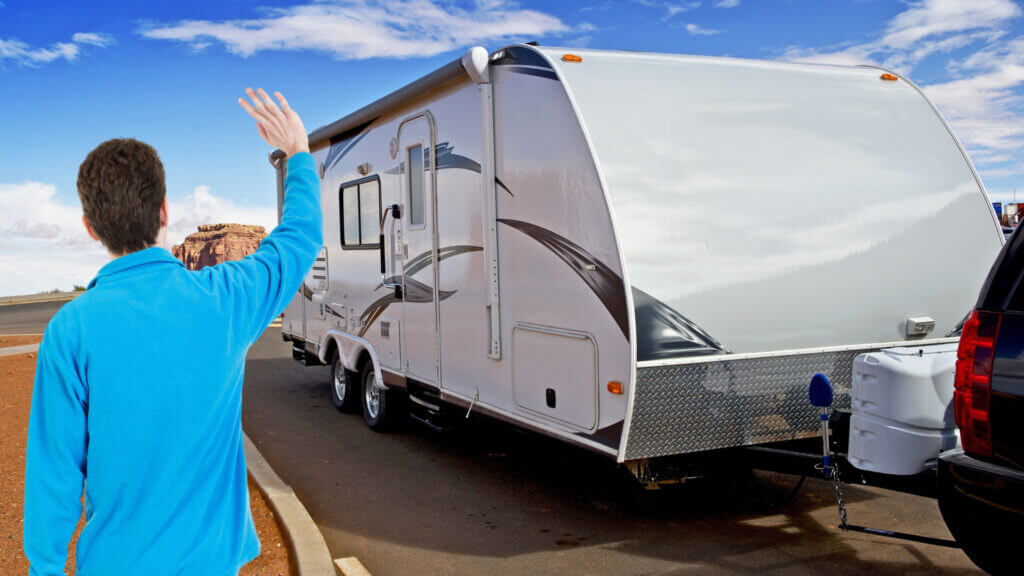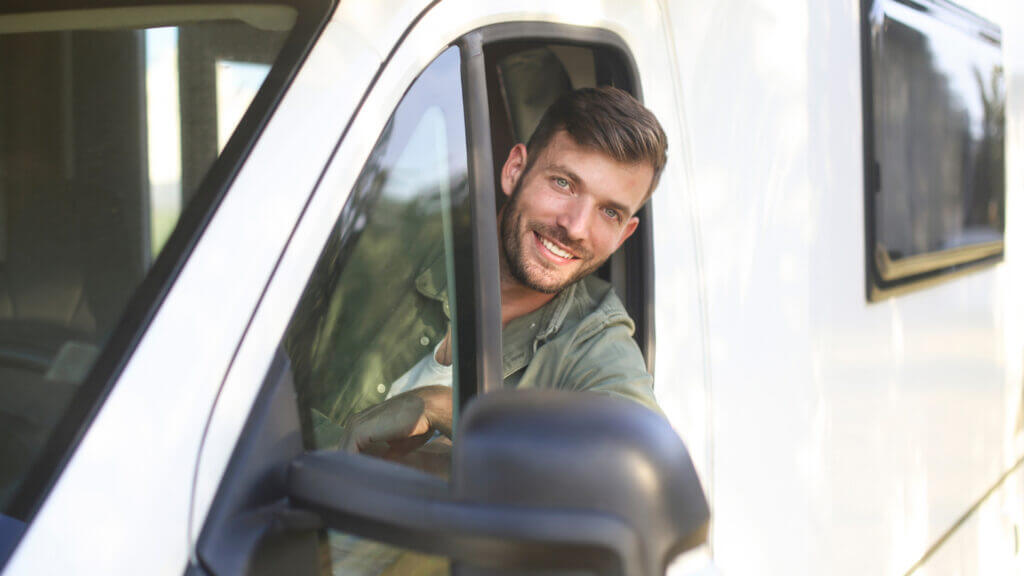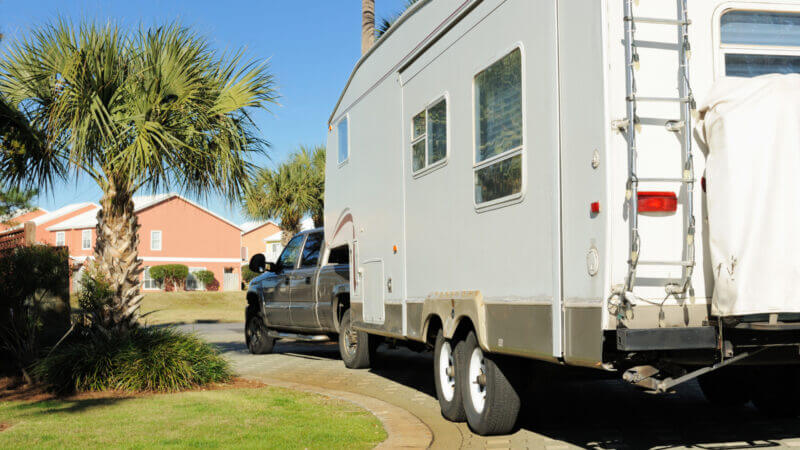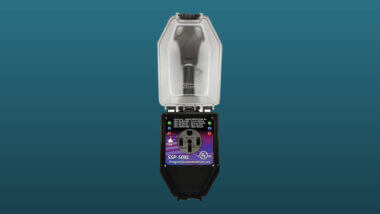Table of Contents Show
It doesn’t matter if you’ve been towing for years or are a rookie: backing an RV into a driveway can be anxiety-inducing. Today, we want to share with you five tips to reduce anxiety while backing up your RV. Let’s go!
Why You Should Know How to Back up Your RV
Did you know that campsites often require you to back your RV into the site? Power, water, and sewer connections are often on the rear side of the campsite because no one wants to stare at their hookups while camping.
Additionally, you’ll often need to back your RV into a spot while in storage. Storage lots often require you to back in, so you can unhitch safely and drive away. If you’re not able to back up your RV, you may have difficulty finding a storage facility to accommodate you.
Backing up your RV into a driveway or camping spot gets easier the more you do it. The more you practice and get a feel for how your RV responds, the less anxiety you’ll experience when you get to a campsite or a driveway.
5 Tips for Backing up a Travel Trailer or Motorhome
Whether you’re a rookie or veteran RVer, we have five tips for backing up your RV. Let’s get started!
#1. Have Someone Be Your Lookout
Your best resource when backing up is an additional set of eyes. This spotter should communicate with the driver, helping them avoid any obstacles. We strongly suggest having a solid communication plan in place between the two. The more the spotter and driver can work together, the easier this process will become.
We also suggest that there be one primary spotter for the driver to communicate with, especially in difficult situations. There’s nothing more frustrating for a driver than to be receiving directions from multiple people. There will often be well-intentioned campers eager to help but who only add to the driver’s anxiety.
Some RVers pride themselves on not needing a lookout or spotter. Don’t let your pride cause damage to your rig or pocketbook! Using a spotter doesn’t make you a better or worse RVer, but it increases safety significantly!

#2. Inspect Your Surroundings First
A popular acronym for backing up an RV is G.O.A.L, or get out and look. When you arrive at your campsite or driveway, step out and inspect the surroundings. Look for drop-offs, low-hanging branches, or other obstacles.
We not only suggest using G.O.A.L. during the start but also throughout the backing up process. If at any point either the driver or spotter is uncomfortable, get out and look. It only takes a few seconds, but it can make a big difference and save you thousands in potential damages when backing your RV into the driveway.

#3. Go Slow
One of the easiest mistakes RVers make when backing up is feeling rushed. It’s easy to feel pressured when other campers are watching or you’re blocking the road. We’ve learned that trying to do things too fast often makes them take twice as long because we make more mistakes.
When it comes to blocking traffic, keep in mind that RVers are generally very understanding and accommodating. It’s easy to think that they’re growing frustrated with you, but they’re most likely not. They understand your situation because they’ve been there before. Don’t feel rushed because you’re blocking the road for a few seconds, or onlookers are watching your moves.

#4. Do the RV Swoop
The key to a smooth backing up process begins before you put your vehicle in reverse. The RV swoop method helps position your RV in an optimal position for backing up into your site. Again, the more you use this method and practice, the easier it will become.
To do the RV swoop, you should drive towards your campsite at the slightest angle possible. When your truck’s nose reaches the front of your site, turn away from that point in a swooping motion. Continue pulling forward until the butt of your RV has reached the middle of your parking spot.
This maneuver puts you in the optimal position for backing into the spot and in a great place to get out and look for potential obstructions when backing up.

#5. Get a Backup Camera
Many RVs come prewired for adding a backup camera, and installation is relatively easy. You’ll have a clear view without getting out of the driver’s seat. Some backup cameras will even integrate with the camera system on your vehicle, so you don’t clutter your dash with additional devices.
Cameras can maximize the driver’s view when backing up, but some can also assist with changing lanes while driving. Many RVs and vehicles have cameras installed on the side mirror so you can better see what’s behind you when changing lanes or, in this case, backing up.

We all know the anxiety of backing up your RV, and we often fail to make good decisions as a result. Minor mistakes or frustrations during these tense moments often compound anxiety levels. Even the most experienced RVer can find themselves feeling pressured during these moments.
So don’t feel bad if you’re struggling to back up perfectly. It’s just part of learning and growing as an RVer, and we hope our experience and tips will help you succeed!
What tips do you have to keep anxiety in check when backing up your RV?







I’m unsure about the RV swoop. If the campsite is on my left do I sweep to the right and vice versa?
Yes, would love to hear more about the “swoop”.
No it’s kinda like driving up to your driveway but instead of pulling in you wanna back in. So you pull up angle in and then immediately out to almost a sideways u turn away from your driveway until your tail end is facing your drive way then you just back in. That kinda of swoop except it’s longer cuz you have 20-40 feet behind you
Exactly correct! That way the tail end of your rig should be pretty much lined up with and the closest point to the driveway/campsite. I hope that this helps!! Safe travels!!